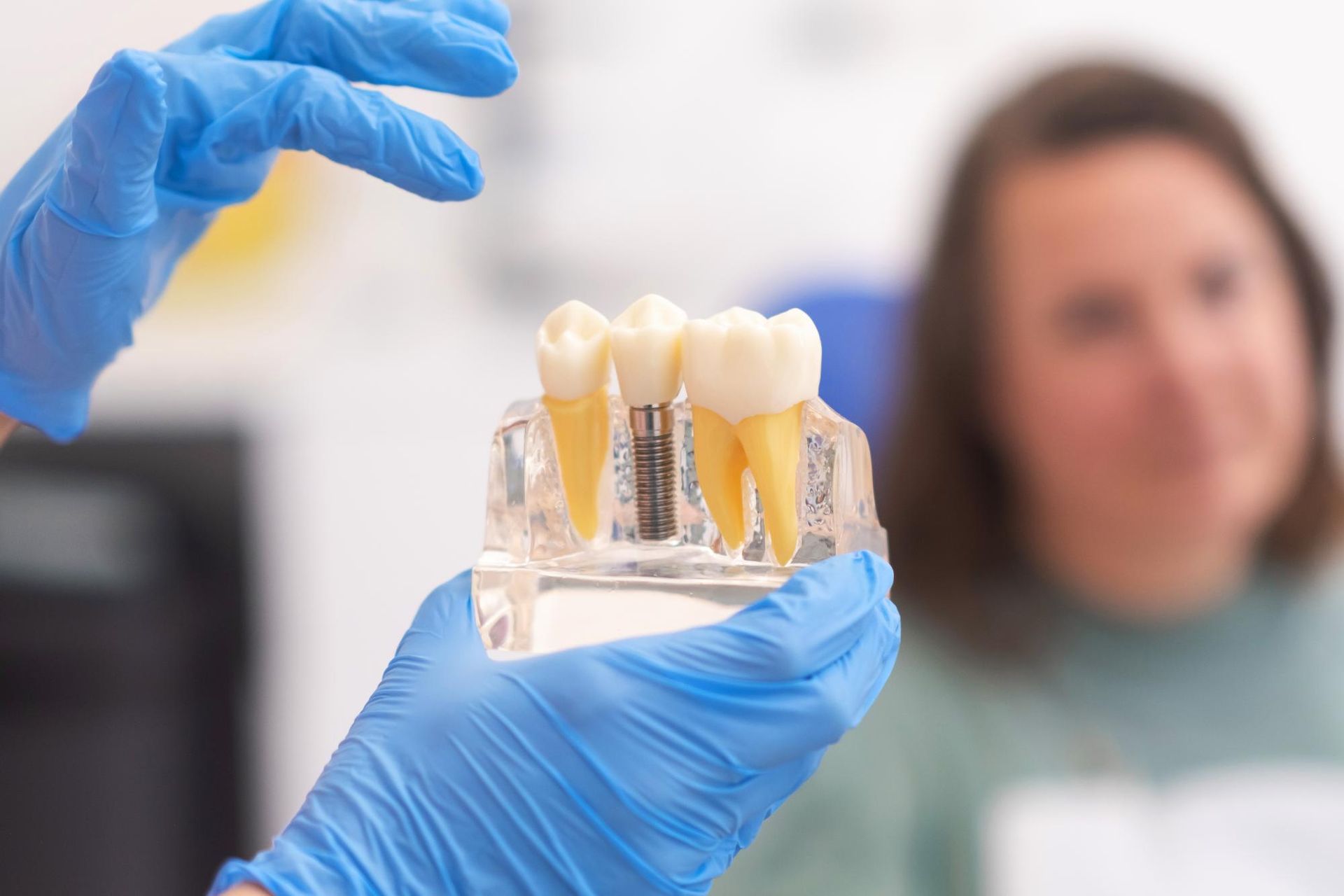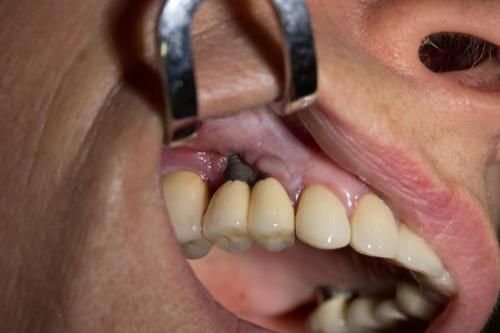Contact Information
Frontdesk@innatedentalsolutions.com
4708 W Plano Pkwy, Plano, TX 75093, United States of America
128 N Highway 77, Waxahachie, TX 75165
4708 W Plano Pkwy, STE 200, Plano, TX 75093
(972) 519-0990
Understanding Screw Teeth in Dental Implants: Procedure, Benefits, and Costs
8 Minute Read
Screw teeth, or dental screws, are crucial components in dental implants. These small titanium posts act as artificial tooth roots, providing a stable foundation for replacement teeth. This article explores what screw teeth are, the materials used, the placement procedure, benefits, potential risks, and associated costs.
Key Takeaways
- Dental implant screws, made from titanium or zirconia, serve as a foundation for artificial teeth by replicating natural tooth roots and providing stability through osseointegration.
- The placement of dental implant screws involves a meticulous procedure incorporating advanced techniques to enhance accuracy, ensuring long-term success and the prevention of complications.
- Dental implant procedures can be costly, ranging from $3,100 to $90,000 depending on the complexity, and insurance coverage can help mitigate these costs.
What Are Screw Teeth in Dental Implants?
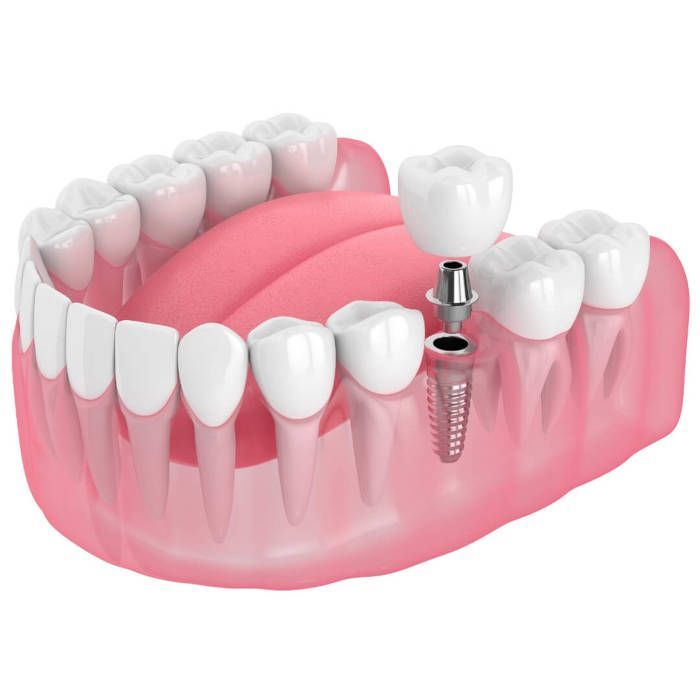
Dental screws, commonly referred to as screw teeth, are small posts made of titanium. They are surgically inserted into the jawbone. These screws are designed to replicate the natural tooth root function, providing a stable foundation for the artificial tooth that will be attached later. Dental screws replicate natural tooth roots, absorbing and distributing biting forces to ensure implant stability and longevity.
Their design closely resembles the natural teeth root structure of teeth, facilitating a more effective integration with the jawbone. This integration, known as osseointegration, allows the dental screw to become a permanent part of the jaw, ensuring that the artificial tooth remains securely anchored and that artificial teeth can provide a reliable solution for those needing replacements.
Their stability is vital for the success of dental implants, making screw teeth indispensable in modern procedures.
Materials Used for Dental Implant Screws
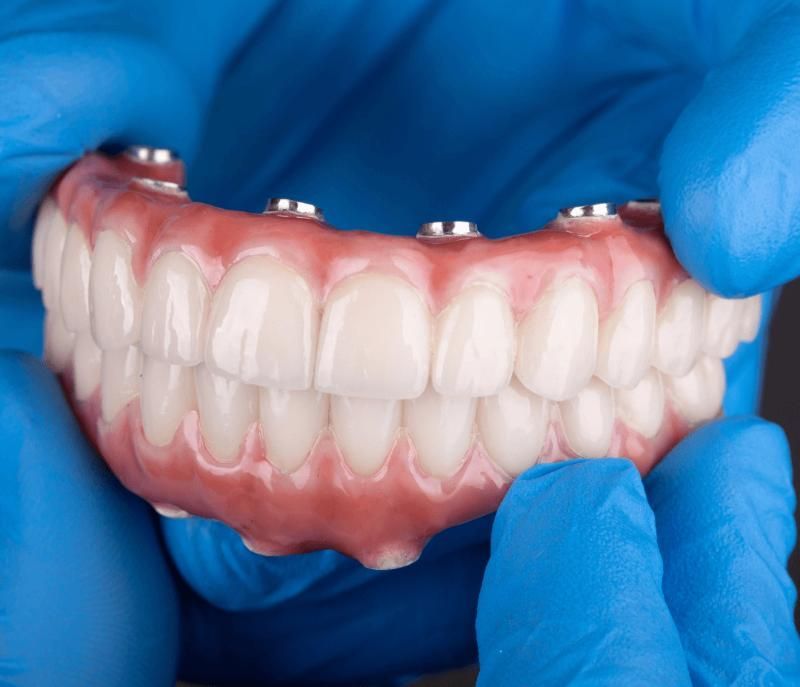
Dental implant screws are predominantly made from two materials: titanium and zirconia. Titanium has long been the standard material for dental implants due to its exceptional strength and corrosion resistance. Its biocompatibility ensures that the human body accepts it without adverse reactions, and it is approved for safety by the FDA.
Zirconia, on the other hand, is a metal-free alternative that offers significant aesthetic benefits. Its tooth-like color makes it an excellent choice for patients concerned about the appearance of their implants. Zirconia implants are also known for their durability, being much stronger than natural tooth enamel, and they are less likely to accumulate plaque compared to titanium implants.
Both materials provide reliable and safe options for dental implant screws, catering to different patient needs and preferences.
Placement of Dental Implant Screws
The placement of dental implant screws is a meticulous process that often involves a team of specialists, including oral surgeons, periodontists, and prosthodontists. The procedure begins with a thorough examination and planning phase to determine the best approach for each patient. During the surgery, a small hole is drilled into the jawbone at the site of the missing tooth, and the dental screw is carefully inserted.
Accurate placement in terms of location and angle maximizes bone contact and prevents damage to vital structures. Dental screws come in various sizes and shapes, chosen based on the type of implant and the condition of the jawbone. This customization ensures that the implant is securely anchored and can withstand the forces exerted during chewing and biting.
Throughout the procedure, advanced techniques such as digital scans and 3D-printed surgical guides are often used to enhance precision. These technologies ensure optimal placement, reducing complications and enhancing the success of dental implant surgery.
The Importance of Dental Implant Screws
Dental implant screws play a pivotal role in anchoring the artificial tooth securely in the jawbone, ensuring stability and functionality. They act as the foundation for the entire implant structure, which is crucial for the implant’s success. Strategically placing these screws maintains stability during the dental implant procedure.
One of the significant benefits of dental screws is their ability to prevent bone loss by stimulating the jawbone, which is essential for maintaining oral health. Osseointegration, the process of the jawbone integrating with the implant, ensures effective load-bearing and stability. This process typically takes several months, during which the screw becomes securely anchored in the jawbone.
The use of titanium screws, known for their high survival rate, further supports bone health and contributes to the long-term success of dental implants.
Steps Involved in Dental Implant Surgery
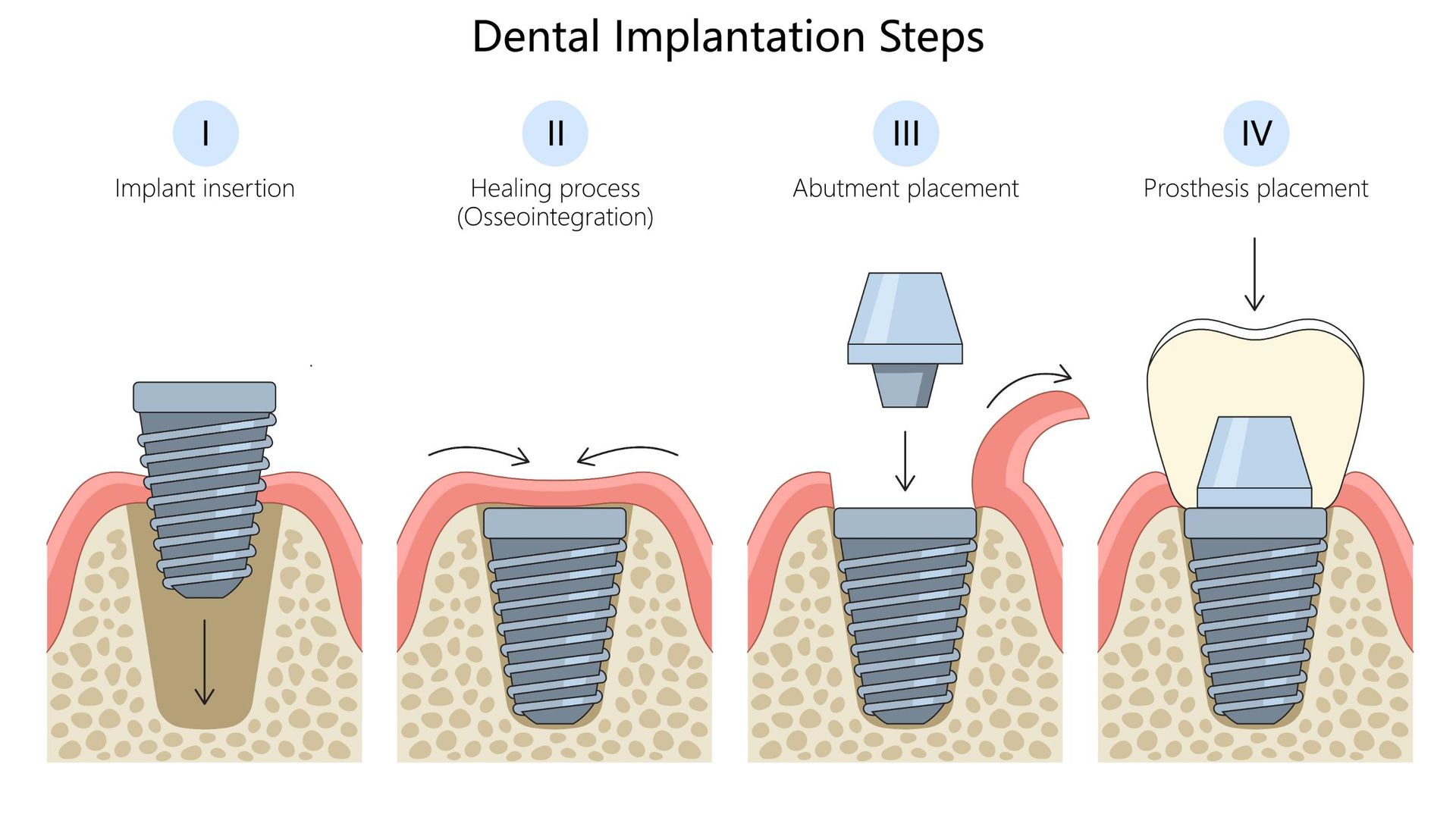
Dental implant surgery involves several critical steps, each contributing to the overall success of the procedure. From the initial consultation and planning, through bone grafting and preparation, to the actual placement of the implant screw and the osseointegration period, every phase plays a vital role.
Finally, the attachment of the abutment and crown completes the process, restoring the patient’s smile and functionality.
Initial Consultation and Planning
The journey towards dental implants begins with an initial consultation and planning phase. During this stage, a thorough examination and panoramic scan are conducted to assess the patient’s dental condition and determine the best treatment plan. Various specialists, including oral surgeons and general dentists, may be involved in this process to ensure a comprehensive approach.
This phase also involves discussing the patient’s medical history and treatment options, allowing the dental team to tailor the implant procedure to the individual’s needs. The goal is to develop a precise and effective plan that maximizes the chances of success and addresses any potential challenges.
Bone Grafting and Preparation
In some cases, bone grafting may be necessary before placing the dental implant. This procedure is essential when the jawbone lacks the density or strength to support the implant. Bone grafting helps build a solid foundation for the implant, ensuring its long-term stability and success.
The bone grafting process involves adding bone or bone-like materials to the jaw, promoting new bone growth and strengthening the implant site. This preparation provides a robust base for the dental screw, crucial for the subsequent steps of implant surgery.
Placing the Implant Screw
Placing the implant screw is a critical step in the dental implant procedure. Utilizing a 3D-printed surgical guide and digital scans, the oral surgeon ensures precise placement of the implant. The procedure typically lasts about one to two hours, depending on the individual needs of the patient.
During the surgery, an incision is made in the gum to expose the jawbone, where holes are drilled to accommodate the implant screw. In some cases, minor bone grafting can be performed simultaneously to enhance the implant’s stability. This meticulous process ensures that the implant screw is securely placed, ready for the osseointegration period.
Osseointegration Period
Following the placement of the dental implant screw, a crucial osseointegration period begins. This phase involves the jawbone growing and forming a solid connection with the implant, ensuring its stability and longevity. Proper integration of the dental screws with the jawbone is essential to prevent bone loss and maintain the implant’s success.
Osseointegration typically takes several months to complete, during which the implant screw must be left undisturbed to fully integrate with the jawbone. Successful osseointegration forms a robust foundation, enhancing the artificial tooth’s durability and functionality.
Attaching the Abutment and Crown
Attaching the abutment and crown marks the final step in the dental implant procedure. The abutment serves as the connection point where the crown attaches, completing the restoration process. Local anesthesia is used during the abutment placement surgery to ensure patient comfort.
Once the abutment is securely in place, impressions are made to craft the crown, which is then affixed to the abutment. This step restores the patient’s smile and functionality, providing a natural-looking and fully functional artificial tooth.
Benefits of Dental Implant Screws
Dental implant screws offer numerous benefits that contribute to the overall success and longevity of dental implants. One of the primary advantages is the stability they provide, ensuring that the implant remains securely anchored in the jawbone. This stability ensures implant success, especially in long-span applications like bridges, where greater durability is required.
Another significant benefit is the high success rate of screw dental implants, which exceeds 95%. They also simplify the restoration process by eliminating the need for messy cement, making maintenance easier and more effective. Additionally, screw-retained implants allow for easier replacement of the crown, which is beneficial for long-term care.
Potential Complications and Risks
Even with a high success rate, dental implants come with potential complications and risks. Infections at the implant site can occur, posing a risk during the healing process. Nerve damage may also arise if the implant is positioned too close to nerve pathways.
Implant failure can result from improper fusion with the jawbone or excessive pressure, while bone loss around the implant can jeopardize its stability and success. Allergic reactions to implant materials, though rare, can lead to inflammation and discomfort.
Symptoms indicating potential complications include persistent pain, swelling, and gum recession. It is important for patients to understand these risks and discuss them with their dental professionals.
Post-Surgery Care and Maintenance
Post-surgery care and maintenance are vital for the success of dental implants. After dental implant surgery, patients are monitored to ensure stability before being discharged. It is advised to avoid rinsing or brushing teeth for the first 24 hours to protect the surgical site.
Swelling and bruising can occur post-surgery, and applying a cool pack can help manage these symptoms. Smoking should be avoided for at least ten days after surgery, as it can disrupt healing and increase the risk of infection.
Maintaining a soft food diet for at least four weeks following the procedure is also recommended to avoid irritating the surgical area. Weekly massage of the soft tissue around the implant helps reduce chronic bacteria accumulation.
Costs Associated with Dental Implant Screws
The costs associated with dental implant screws can vary significantly based on several factors. The total cost for a dental implant procedure, including the implant, abutment, and crown, typically ranges from $3,100 to $5,800. Patients replacing multiple adjacent teeth may spend between $6,000 and $10,000 by utilizing fewer implants to support a bridge.
Replacing all teeth individually can be quite expensive, with costs ranging from $60,000 to $90,000, while implant-supported dentures typically range from $24,000 to $50,000. Factors such as the complexity of the procedure, the location of the dental practice, and the need for additional treatments can affect the overall cost.
Insurance coverage for dental implants has been improving, with reimbursement averaging about $1,500 per implant per year. Discussing the complete pricing structure with the dentist upfront helps avoid any surprises.
Summary
Dental implant screws are a revolutionary solution for those suffering from missing teeth, offering stability, functionality, and a natural appearance. From the initial consultation and planning to the final attachment of the abutment and crown, each step in the dental implant procedure is crucial for ensuring success. The materials used, the meticulous placement process, and the osseointegration period all contribute to the long-term success of dental implants.
By understanding the benefits, potential risks, and costs associated with dental implant screws, patients can make informed decisions about their oral health. Dental implants provide a reliable and effective solution for restoring smiles and improving quality of life. If you are considering dental implants, consult with a dental professional to explore your options and embark on the journey to a healthier, more confident smile.
Frequently Asked Questions
-
What materials are used for dental implant screws?
Dental implant screws are commonly made from titanium and zirconia. Titanium provides strength and corrosion resistance, while zirconia offers aesthetic advantages with its tooth-like appearance.
-
What is the osseointegration period?
The osseointegration period is critical for the stability and longevity of a dental implant, as it is the time required for the jawbone to grow and securely bond with the implant screw, typically taking several months.
-
How much does a dental implant procedure cost?
The cost of a dental implant procedure generally falls between $3,100 and $5,800, depending on the procedure's complexity and any additional treatments necessary. It is essential to consult with a dental professional for a precise estimate based on individual needs.
-
Are there any risks associated with dental implant surgery?
Yes, dental implant surgery carries risks such as infections, nerve damage, implant failure, and allergic reactions to materials. It is essential to consult with your dental professional to understand and mitigate these risks.
-
What kind of post-surgery care is required after getting dental implants?
Post-surgery care for dental implants requires avoiding rinsing or brushing for the first 24 hours, managing swelling with cool packs, abstaining from smoking, and adhering to a soft food diet. Additionally, it is essential to massage the soft tissue around the implant weekly to prevent bacteria accumulation.
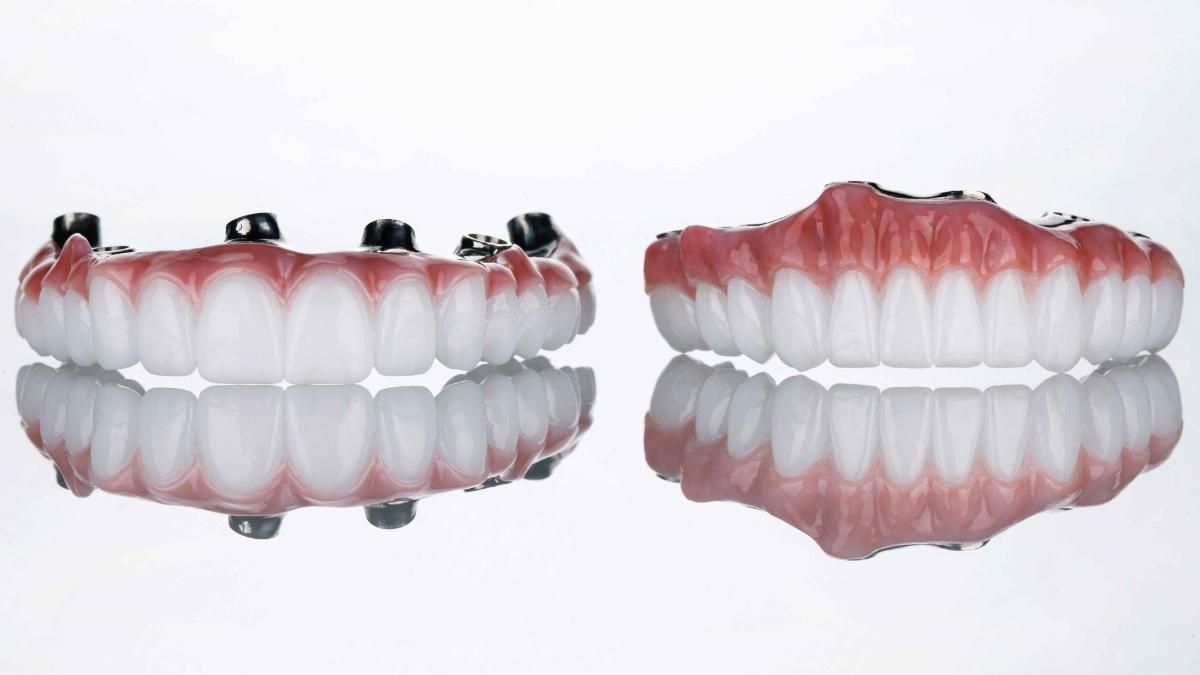
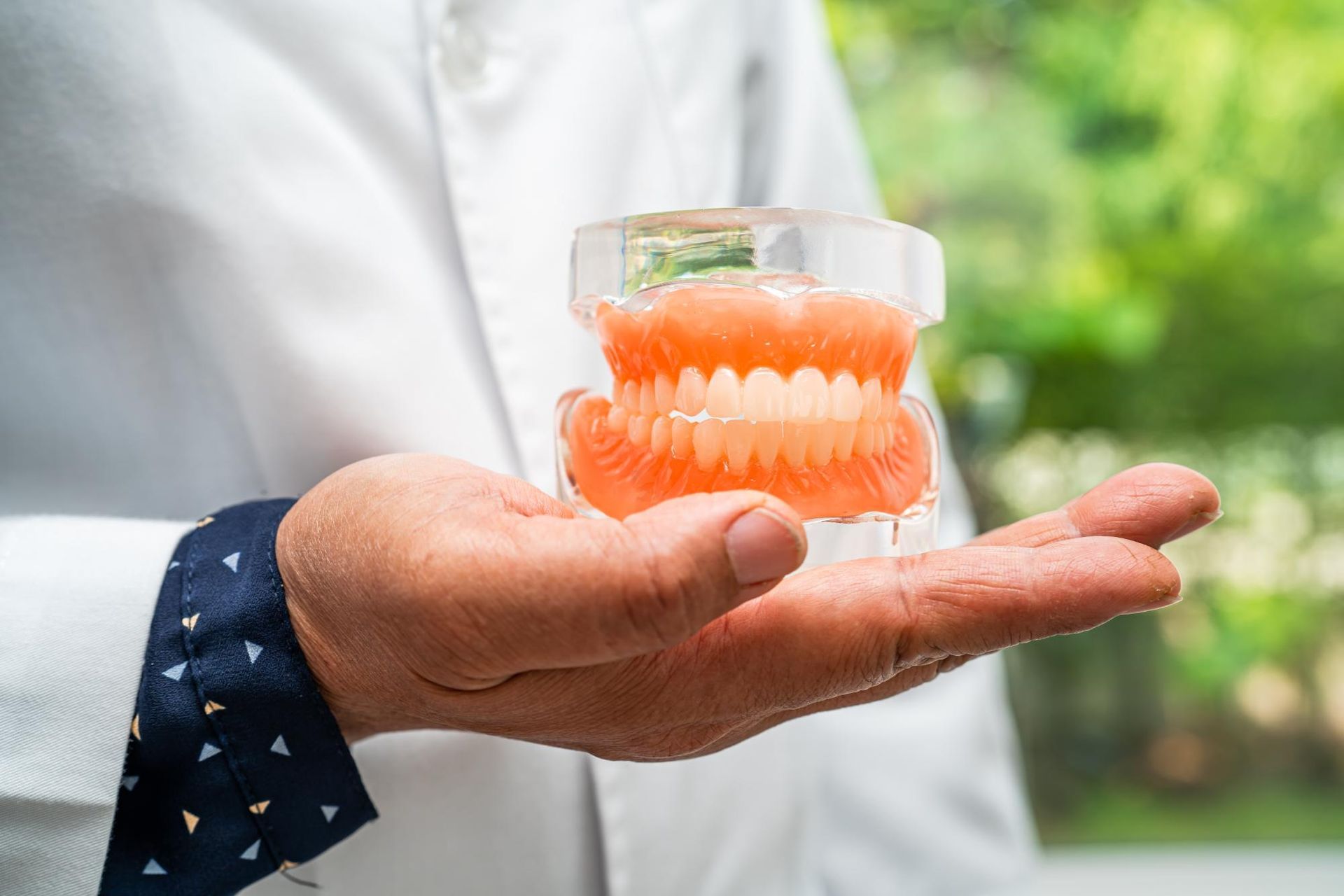
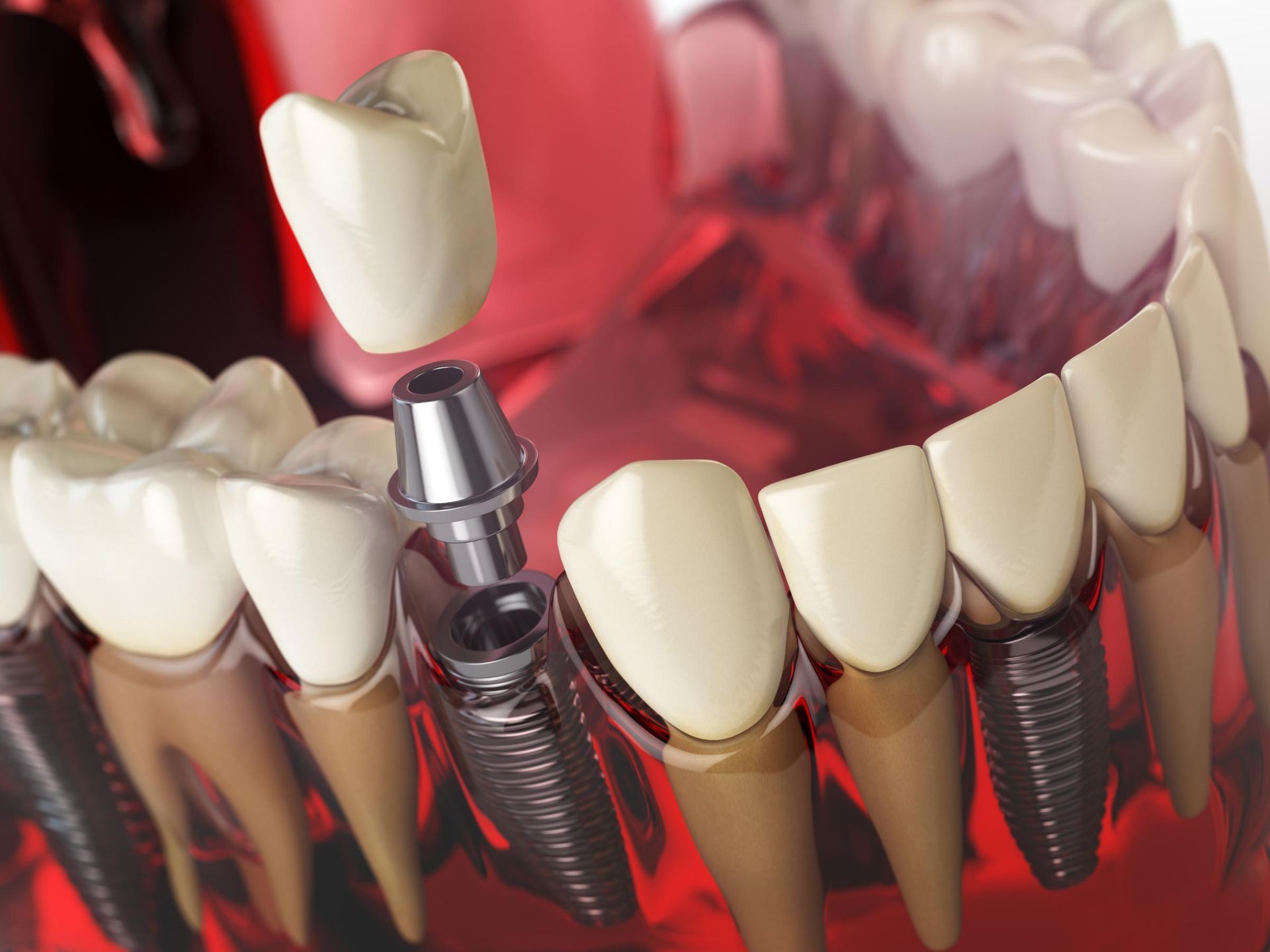



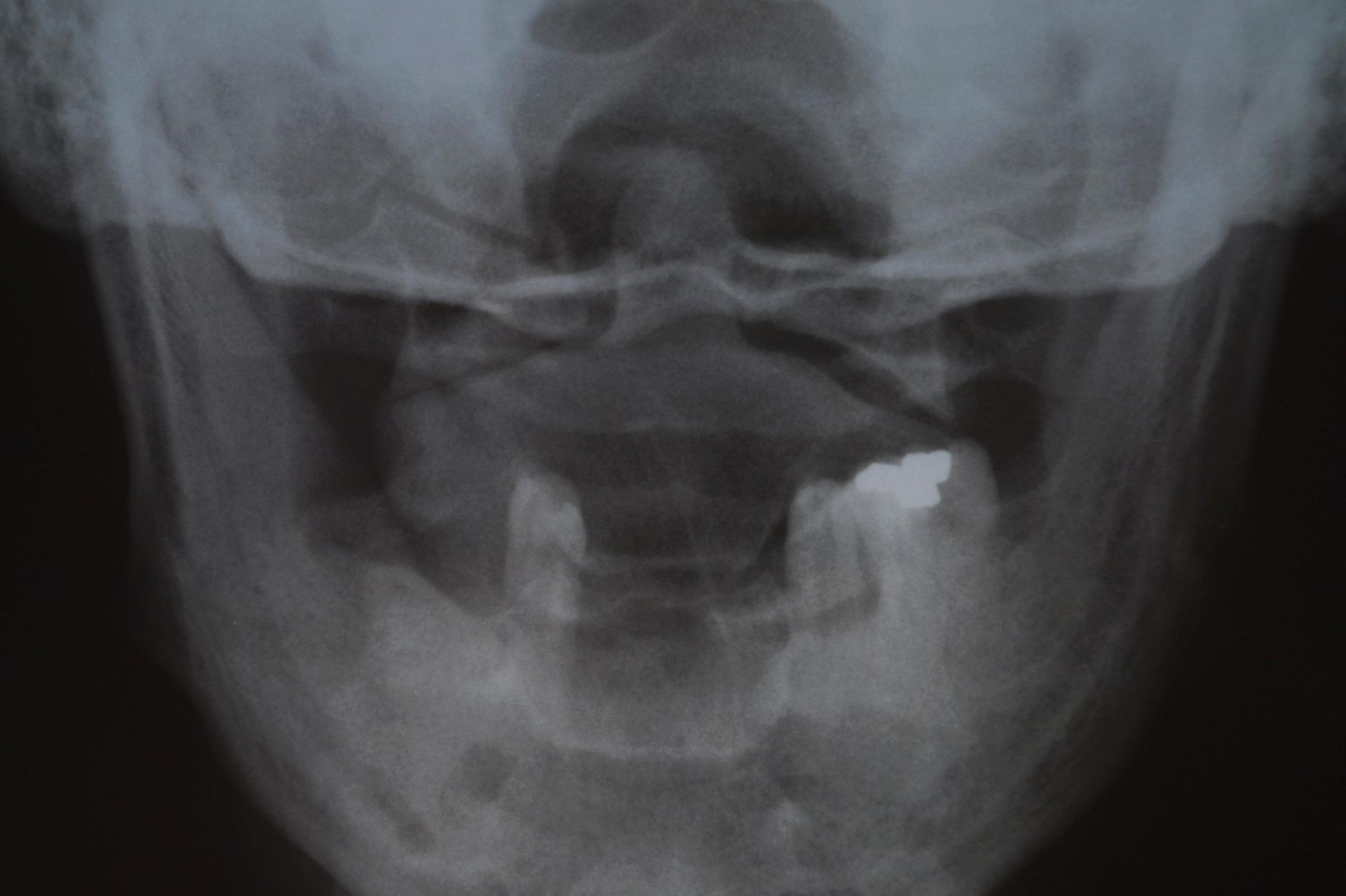
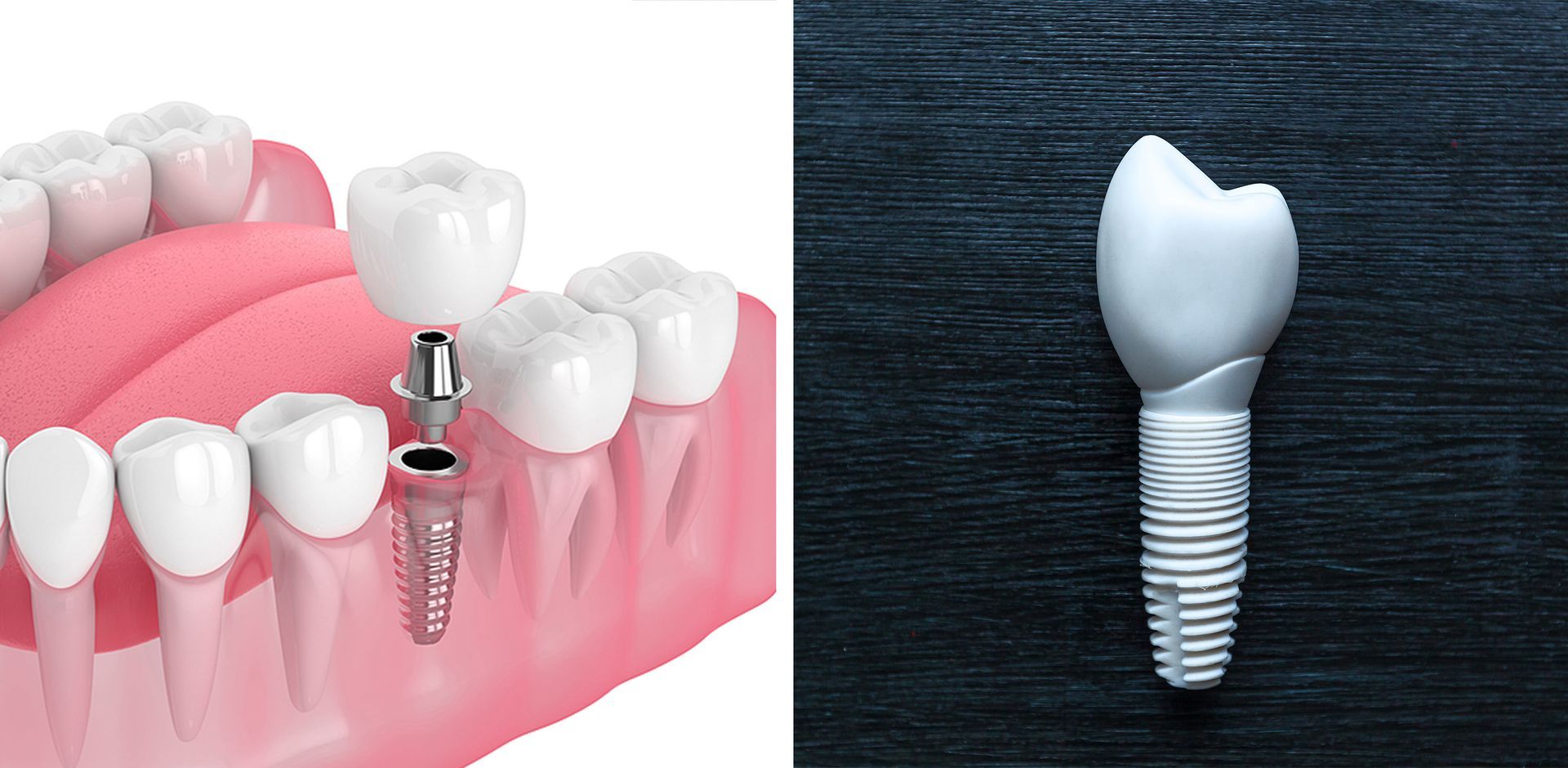
CONTACT US
Your Deserve a Beautiful Smile
Let Us Make It Happen
For more information about our services, or to get a free quote, complete the form below or give us a call at (972) 519-0990.

Contact Information
Get Your Free Dental
Implant Consult Package
Get your First Consultation, Panoramic X-Rays, & Treatment Plan with our head dentist for FREE to see if you qualify for implant treatment. Everything you need to get started transforming your smile. $397 Value. Please note, dental implants are NOT covered by Medicare or Medicaid.
Reserve Your Spot Today - Limited Availability Every Month
Our Services
Quick Links
Our Locations
Plano Location
4708 W Plano Pkwy, STE 200, Plano, TX 75093
Waxahachie Location
Innate Dental Solutions, 128 N Highway 77, Waxahachie, TX 75165
All Rights Reserved | Innate Dental Solutions

